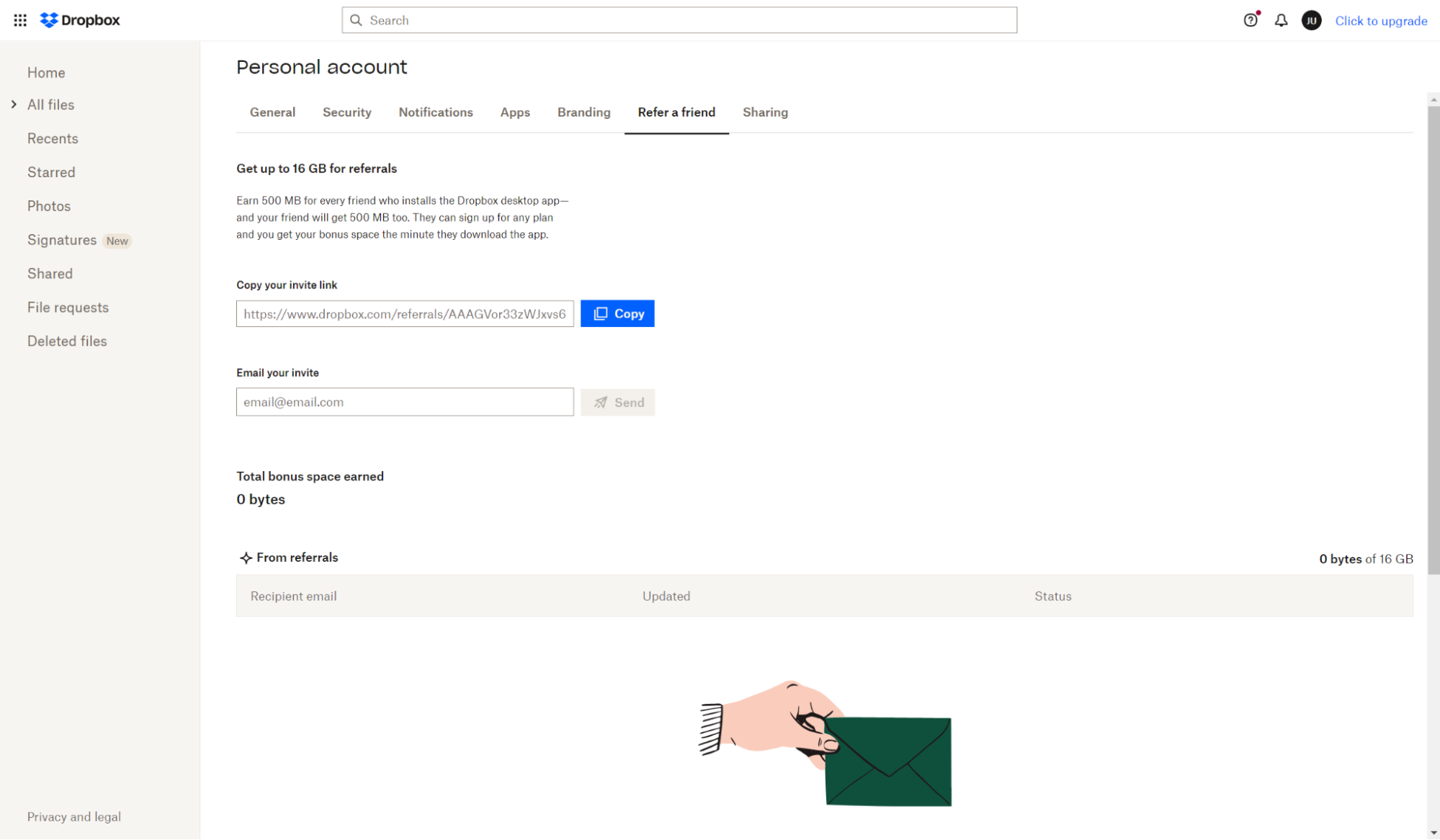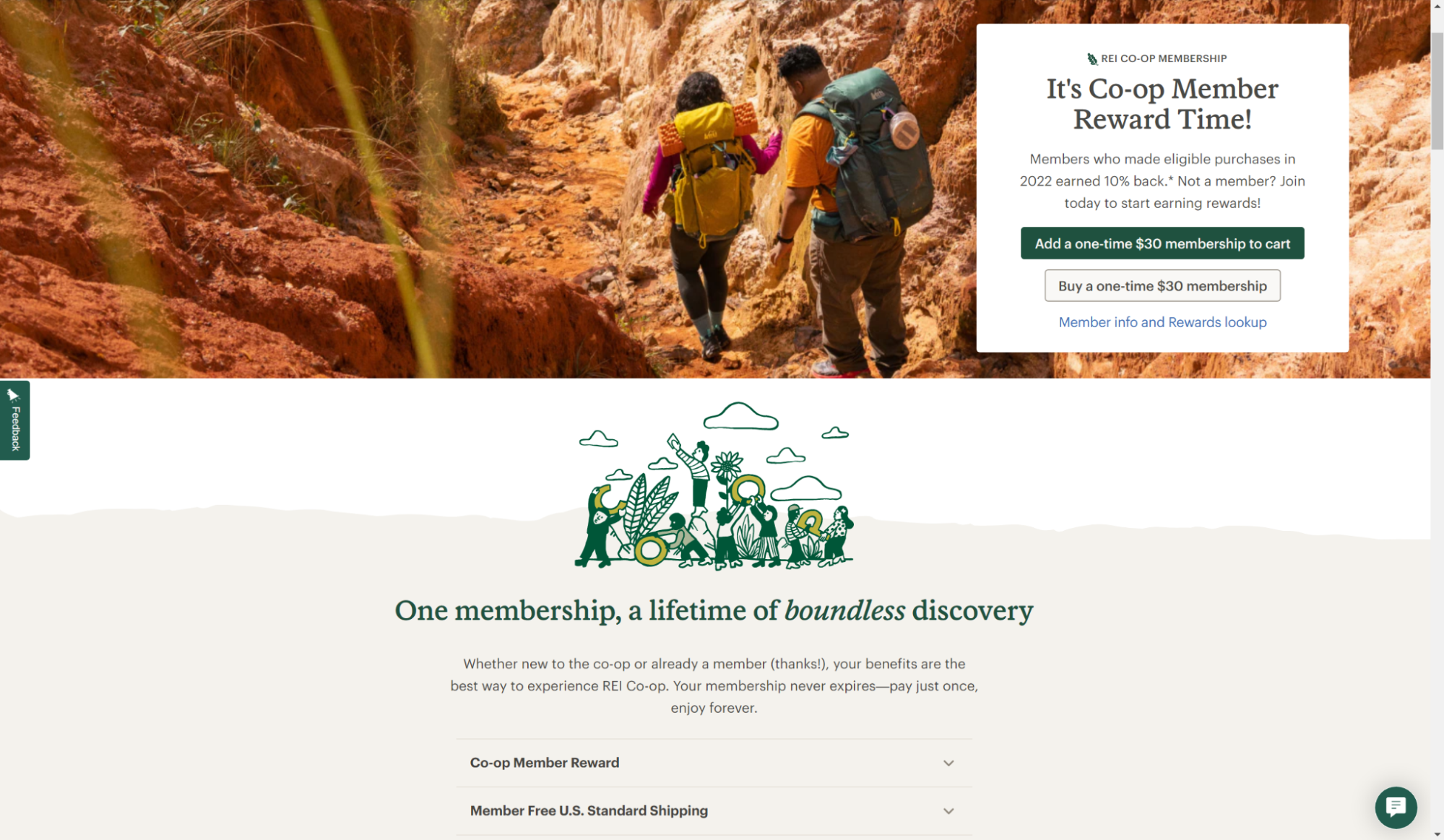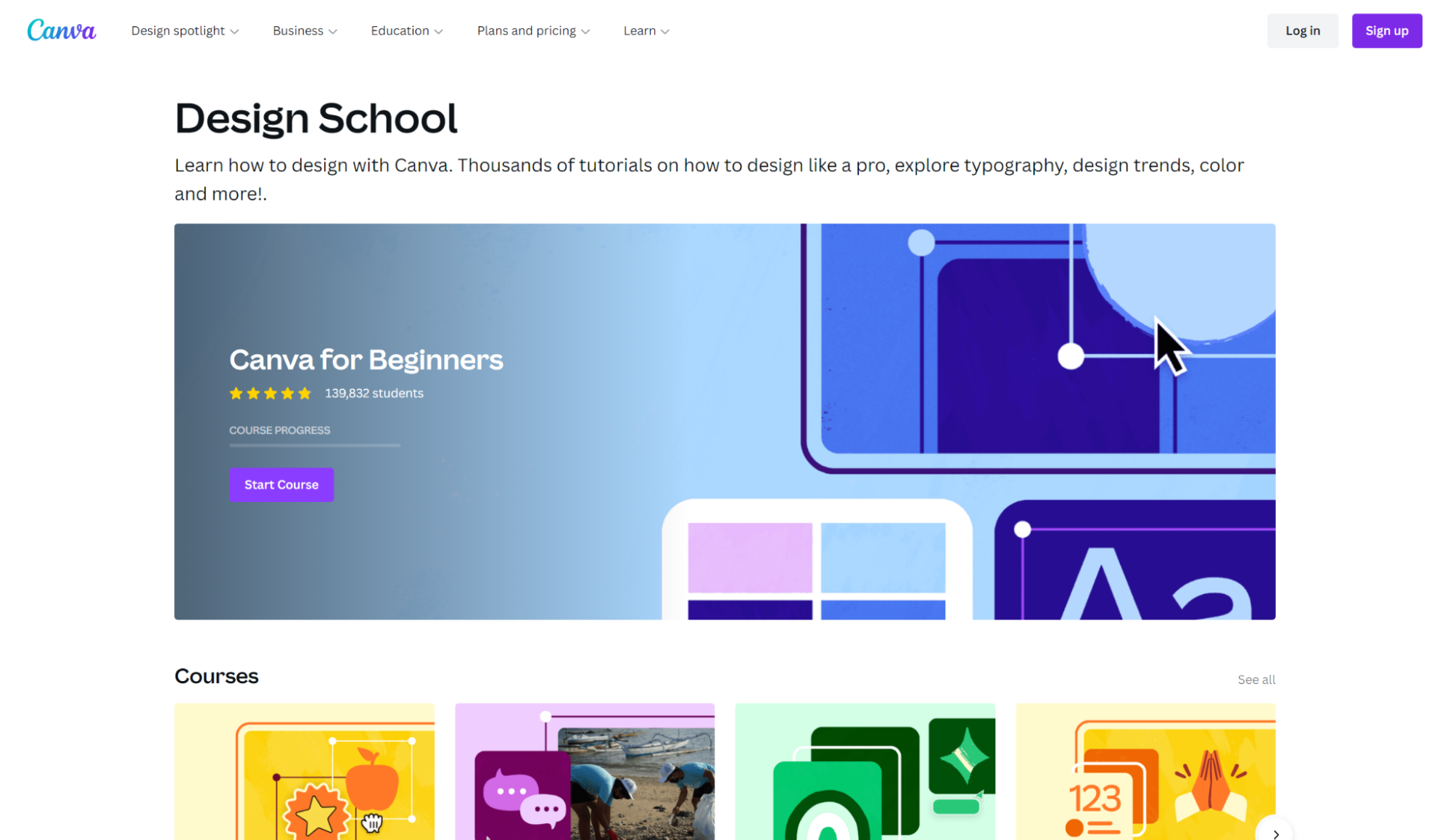
Businesses need more than siloed marketing functions to drive growth in today’s highly competitive market. They require a comprehensive marketing strategy that helps them reach and engage their target audience across the entire funnel.
This is where growth marketing comes into play, with an approach that encompasses the whole customer journey. Read on as I walk you through:
- What growth marketing is
- How it differs from other marketing approaches
- Why growth marketing is important
- The core principles of growth marketing
I’ll also show you examples of different growth marketing strategies at work so you gain a better idea of its versatility and how you can potentially incorporate it into your business.
What is growth marketing?
Growth marketing is an approach that focuses on using data-driven strategies and experimentation to scale. Using information about your business, it identifies the most effective ways for you to grow your business.
Simply put, it hones in on what does and doesn’t work across the entire customer journey. Then, you build and refine your strategy around these findings for more fruitful results — all with the ultimate goal of driving company growth.
Growth marketing vs. inbound marketing and other strategies
What distinguishes growth marketing from other approaches? Certain key characteristics differentiate this method, which I’ve quickly broken down below.
Growth marketing vs. inbound marketing
Growth marketing shares some similarities with inbound marketing, but it differs in one significant way: its comprehensiveness.
Inbound marketing usually remains top-of-funnel, meaning it focuses on attracting leads through channels like content marketing, social media, and search engine optimization (SEO).
Meanwhile, growth marketing encompasses the full funnel, optimizing every stage of the customer journey from lead generation to customer retention.
Growth marketing vs. traditional marketing
Traditional marketing also emphasizes lead generation, but it focuses on increasing brand awareness as well. It typically involves tactics like advertising and is essentially a top-of-funnel method as well (which may drive less revenue).
Growth marketing vs. product marketing
Product marketing focuses specifically on your product and how well it performs. Product marketing often leverages the product as a growth tool, for example by offering a free trial and selling users on the value of the tool as they test it out.
This type of marketing is centered around:
- Specific products or services you offer
- Understanding their unique features and benefits
- Creating messaging that conveys their advantages to potential customers
The goal is to drive adoption and increase market share by strengthening your product perception and value proposition.
Meanwhile, growth marketing addresses the entire customer journey, as we mentioned previously. This approach is more holistic, producing a more seamless and personalized customer experience by incorporating multiple marketing channels and strategies with the aim to attract, engage, and retain loyal customers.
Growth marketing should heavily involve your product marketing team, as product is often one of your strongest growth levers.
Growth marketing vs. account-based marketing
Lastly, account-based marketing (ABM) is a targeted approach that focuses on specific high-value accounts. It fosters engagement and conversions among them to maximize their potential worth.
Compared to growth marketing, which reaches a broader audience and works to expand the customer base, ABM pinpoints key decision-makers within accounts, then crafts personalized marketing materials that speak directly to their needs and pain points.
Whereas ABM is largely sales driven and outbound focused, growth marketing often uses a hybrid of outbound and inbound to optimize conversions throughout the entire funnel.
Why is growth marketing important?
Growth marketing has become especially critical in the digital landscape, especially for businesses that want to scale. Below are the top advantages that prove more companies should consider implementing it in their overall strategies.
Contributes to sustainable growth
While some traditional tactics aim for short-term gains, growth marketing focuses on the big picture, with the primary objective to achieve sustainable expansion.
By optimizing the entire customer journey, it acquires new customers, retains existing ones, and increases their lifetime value. These optimizations center around personalization, which directly impacts how shoppers behave throughout their customer life cycles:
- 76% of consumers are more likely to purchase from brands that personalize.
- 78% are more likely to recommend companies that do the same.
- An additional 78% are more likely to repurchase from businesses that incorporate personalization.
Increases customer acquisition and retention
Since growth marketing is data driven, it helps identify your most effective marketing channels so you can build strategies around them.
Let’s say you discovered some of your best channels for organic acquisition are:
- SEO, which builds your online presence, brand authority, and engages prospects at different awareness stages
- Referral programs that let you capitalize on word-of-mouth marketing and recommendations
- Influencer marketing, which leverages the audiences of well-known personalities
You can then personalize your messaging and customer experiences for each channel to match consumer needs and preferences. As a result, you’ll see higher acquisition and retention:
- Buyers referred by other customers have 37% higher retention rates.
- Micro-influencers’ audiences are both more engaged and more likely to act, with 65% visiting a brand’s app or site, and 46% making a purchase.
It’s easy to see why over three-quarters of marketers (76%) leverage content, a key part of SEO, for lead generation. Additionally, since growth marketing is concerned with the full funnel, it optimizes every experience for a seamless path through every conversion step.
Maximizes ROI
Letting data guide your decisions also helps with budgeting. By identifying your best-performing channels, you can easily create campaigns for them and allocate finances accordingly.
This can yield a higher return on investment (ROI) and lower customer acquisition costs (CAC), but your figures will vary based on your channels and acquisition tactics. I’ll use the ones covered in the previous point as examples:
- SEO – Can reduce CAC by up to 75%
- Referral programs – Referred customers bring in a 60% larger ROI
- Influencer marketing – You can enjoy $5.78 for every dollar spent on this channel
Drives innovation
Growth marketing is all about testing and optimizing your approach. It encourages you to take risks and try new things, which can lead to innovative solutions and new growth opportunities.
Imagine you attempt to retain customers with a loyalty program, but it delivers poor results. You can gather feedback to discover why it failed, then make corrections so it’ll thrive.
Adapts to changing market conditions
In the rapidly changing business environment, with trends shifting quicker than companies can anticipate, agility and adaptability are essential.
Because growth marketing gives you access to data and insights about consumer behaviors, you can quickly pivot your strategies based on any market changes and stay competitive and relevant.
Key principles and tactics
To help you understand how growth marketing works in practice, I’ll give you a closer look at the core elements that drive it.
1) Data-driven decision-making, experimentation, and testing
At the heart of growth marketing is a commitment to rely on data for decisions. That’s why you should use a variety of tools for tracking and measuring customer trends, including:
- Website analytics – Tracks various aspects of your site’s performance like traffic, engagement, and conversions
- Customer feedback – Tells you if and where your offerings are lacking and helps you understand consumer pain points
- A/B testing – Involves tweaking characteristics of your messaging or marketing channel to create variants, which you then deliver to your audience in unpredictable succession to find out which performs better
With a focus on data-driven experimentation and optimization, you can pinpoint what works and adjust your approaches to engaging customers and driving revenue to achieve the best results.
2) Full-funnel optimization
As mentioned earlier, growth marketing encompasses the entire funnel. Optimizing every stage of the funnel maximizes the efficacy of your campaigns and drives more revenue. That includes the following steps in the buyer journey.
Lead generation
In the lead generation stage, your aim is to attract the interest of potential customers. Some tactics you could employ are:
- Pay-per-click (PPC) ads or SEO – Target the right query to present your brand to search engine users who, by searching for your keywords, express contextual interest in what you offer.
- Social media ads – Ads on social aim to build brand awareness, and they help you reach various audiences in the process. Those who engage with these ads can then be directed to your website or landing page and guided further down the sales funnel.
Lead nurturing
Your main task at this stage is to gain the trust of the people you’ve attracted, then foster relationships with them. Your messaging and communications are crucial to accomplish this and can be delivered through these channels:
- Content marketing – By understanding buyer characteristics, you’ll deliver targeted content that resonates with customer goals and objectives.
- Email marketing – Sending personalized emails also nurtures leads and strengthens your relationship with them. You can set triggers to send emails based on visitor actions such as clicking on a link, downloading gated content, or opening certain pages.
Conversion optimization
After nurturing your leads, compel them to take a desired action on your website. That could be making a purchase, signing up for your newsletter, or clicking on CTAs. To enhance your conversion rate optimization, lean on tactics like:
- Proper CTA placement – Not all visitors read content until the end — which is where CTAs are usually seen. Instead, place one above the fold so they’ll see it early and learn their next step (e.g., to read on or get in touch).
- Display reviews and testimonials – A Trustpilot survey found over two-thirds of consumers consult online reviews before making a purchase. Add them to your website to nudge leads further down your funnel more quickly.
Customer retention
Finally, you need to ensure those who convert stick with your brand. Earn customers’ loyalty and keep them satisfied to secure long-term sustainability. Here are a couple of retention strategies to help you do so:
- Make onboarding seamless – This involves regularly educating customers so they gain the most from your offerings. In fact, 86% of consumers said they’ll stay loyal if a company provides onboarding and regular education, while 74% would go elsewhere if it’s too complex.
- Offer loyalty programs – These programs incentivize frequent and repeat purchases, making them great for improving customer retention. One study found 62% of consumers actually spend more money on brands after signing up for a paid loyalty program.
3) Cross-functional collaboration
Collaboration across various teams and departments — such as marketing, sales, product, and customer success — is necessary for growth marketing to bear fruit. They should align their goals, share data, and work together to create a seamless experience throughout your customer’s journey resulting in happier customers and higher customer lifetime value.
Lead generation
For instance, marketing can use customer data to build personas and share them with sales. Sales will then understand the ideal customer profile, adjust their approach, and hone in on the most qualified leads. This also helps them understand buyer pain points, needs, and preferences.
Lead nurturing
Marketing can then build campaigns that educate and engage prospects with valuable content throughout their journey. Afterwards, sales can provide feedback on what does and doesn’t work to make adjustments.
Conversion optimization
Additionally, marketing and sales can work together to attract, engage, and convert prospects into customers. For example, they could regularly review and analyze data, such as conversion rates, customer feedback, and sales performance, to identify areas for improvement and adapt.
Customer retention
Finally, product and customer success personnel can cooperate to nurture existing customer loyalty. When those who’ve bought from you have issues with your product, it’s up to these two departments to address their complaints.
Marketing will also play a role, for instance, through the creation of loyalty programs that give consumers a reason to stay with your brand.
4) Personalization and segmentation
Successful growth marketing is tied to understanding that every customer is unique and requires a personalized approach.
By segmenting their audience based on factors like behavior, demographics, and interests, growth marketers can tailor campaigns to each type of customer for positive results.
5) Viral marketing
You should also recognize the power of viral marketing. Crafting content that people want to share reaches a wider audience and drives more growth for your brand. It can include tactics such as:
- Social media campaigns – Viral social campaigns can land in front of millions of people, and those that strongly resonate with audiences help, but make sure you use the right format. Of note, 66% of consumers say short-form video is the most engaging type of social content.
- User-generated content (UGC) – UGC is typically a text, photo, or video review or testimonial shared by someone who’s experienced your brand. It’s another powerful strategy, with consumers saying it impacts their purchase decision 9.8 times more than influencer content.
Concrete results from growth marketing
To cap things off, I’ll show you various companies that have successfully implemented growth marketing strategies.
Referrals: Dropbox

Image: Dropbox
Dropbox opted to launch a referral program to drive growth. The file hosting service incentivizes users who invite their friends to sign up by offering additional storage space.
Dropbox users simply need to send an invite via email or a shareable link for their friends to accept. This tactic helped Dropbox grow from 100,000 users to over four million in only 15 months.
Loyalty programs: REI

Image: REI
REI, an outdoor brand and co-op with 20 million lifetime members, updated their lifetime membership and loyalty program, aiming to more than double their membership to 50 million by 2030.
For each purchased membership, REI donates $5 to their Cooperative Action Fund, which supports various organizations and causes. Besides this social impact, for only $30, members gain lifetime access to:
- Free standard shipping
- Early-release collections
- Discounted rental and repair services
- And more
Personalized campaigns: Coca-Cola

Image: Coca-Cola
Coca-Cola’s award-winning “Share a Coke” campaign involved producing bottles and cans with peoples’ names printed on them, then selling the unique merch in different markets.
It generated a ton of UGC on social media, where customers shared photos of themselves holding their personalized drinks. In Australia alone (the campaign’s place of origin), Coca-Cola sold over 250 million named bottles and cans to a population of less than 23 million people.
Active social media presence: Duolingo

Image: TikTok
Duolingo, a provider of language learning certifications and apps, uses their green owl mascot and comedy to build brand awareness and a viral presence on TikTok. The company attributes their success to social media coordinator Zaria Parvez and Mark Pavic, the one who wears the costume.
These videos are built around what appeals to Duolingo’s audience: trending audio on TikTok and how the company’s role as a “language learning brand” fits into the platform’s current trends. As of today, Duolingo has accumulated 6.1 million followers and 123.5 million likes on TikTok.
Online learning: Canva

Image: Canva Design School
Canva’s Design School teaches users how to create high-quality, engaging images with little design experience and no intricate software.
They even provide courses on how to create videos, websites, and more, effectively showing the countless possibilities Canva offers. As of this writing, their “Canva for Beginners” course alone boasts 139,832 enrolled students.
Wrapping up — Help your brand soar with growth marketing
Growth marketing is a powerful strategy that encompasses your entire customer journey, letting you tailor each stage according to consumer needs. Thanks to its key principles and tactics, you can achieve better results, a higher ROI, and, ultimately, long-term sustainable growth.
Its versatility is also excellent for innovation and adjusting to market fluctuations, and the various examples provided in this article have displayed its wide range of potential use cases. Whether you’re looking to gain traction as a startup or scale up your establishing enterprise, growth marketing will help you reach your goals.